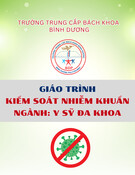
9 Chemical Hazards
9.1 CHEMICALS
Chemical haz ards have been addres sed in Cha pter 8 with regard to their impact upon
the workplace and its wor kforce . Chap ter 8 speaks in some detai l of the health effects
of hazardo us or toxic (poisonous ) chemi cals. Chapter 9 provi des infor mation on the
means by which chemicals enter the body, the exposur e guidelines , and the form s in
which chemi cals presen t themselv es to the b ody as contam inants. Also, the chap ter
lists the catego ries of chemicals that most often are seen in the wor kplace a nd also
describes why based upon their composit ion they may pose a hazard.
9.2 ROUTES OF ENTRY AND MODES OF ACTION
Chemicals enter the human body via many routes. The nature of the chemical often
determines how the chemical enters the body. Once into the body the chemical tends
to target certain systems and organs of the body. The entry may be through the eyes,
skin, lungs, or ingestion and at times by injection (penetration).
9.2.1 EYES
The importance of the human visual system is evident. Good eyesight is a must for
performing tasks where man and machine interact. Of all the major body organs prone
to worksite injuries, the eye is probably the most vulnerable. Consequently, protection
against eyes and face injuries is of major concern and importance for workers. The eye
The handling, storage, and sale of chemical is part of the goods and materials service sectors.
ß2008 by Taylor & Francis Group, LLC.

is an organ of sight and is not designed for the demands of prolonged viewing at
close distances as is commonplace in today’s workplace. Although the eye does have
some natural defenses, it has none to compare with the healing ability of the skin,
the automatic cleansing abilities of the lungs, or the recuperative powers of the ear.
This is why an eye injury is the most traumatic loss to the human body.
The eyeball is housed in a case of cushioning fatty tissue that insulates it from the
skull’s bony eye socket. The skull, brow, and cheek ridges serve to help protect the
eyeball, which is comprised of several highly specialized tissues.
The front of the eyeball is protected by a smooth, transparent layer of tissue
called the conjunctiva. A similar membrane covers the inner surface of the eyelids.
The eyelids also contain dozens of tiny glands that secrete oil to lubricate the
surfaces of the eyelids and the eyeball. Another gland located at the outer edge of
the eye socket secretes tears to clean the protective membrane and keep it moist.
The most common injury to the eye is when foreign particles enter into it. Its
effects are as follows:
.Pain, because the cornea is heavily covered with nerves and an object
sitting on the surface of the cornea will hurt constantly and that may
obscure vision and stimulate or damage the nerves
.Infection, because a foreign particle may carry bacteria or fungi, or may be
carried by fingers used to rub the eye
.Scarring, from tissue that has healed and may obscure the vision
.Damage, depending on the angle and point of entry and speed of the particle
Heat can destroy eye and eyelid tissues just as it does other body tissues. High-
intensity light may have sufficient energy to damage the eye tissue. Exposure to
ultraviolet light from welding operations (known as welder’sflash) may severely
damage the eye. Also, the effects of accidental exposure of the eye to chemicals can
vary from mild irritation to complete loss of vision. In some cases, a chemical that
does not actually damage the eye may be absorbed through the eye tissue in
sufficient quantities so as to cause systemic poisoning. Splash goggles shown in
Figure 9.1 help protect the eyes from chemicals.
Vents
FIGURE 9.1 Example of splash goggles. (Courtesy of the Department of Energy.)
ß2008 by Taylor & Francis Group, LLC.

Exposure to caustic chemicals is much more injurious to the eyes than acids.
An eye that has been exposed to a caustic may not look too bad on the first day
after exposure. It may, however, deteriorate markedly on succeeding days. This is
in contrast to acid burns where the initial appearance is a good indication of the
ultimate damage.
9.2.2 LUNGS AND INHALATION
The respiratory system consists of all the organs of the body that contribute to normal
breathing. This includes the nose, mouth, upper throat, larynx, trachea, and bronchi,
all airways that lead to the lungs. It is in these airways that the first defense against
contaminants exists. The adult human lung has an enormous area (75 sq yd total
surface area) where the body exchanges waste carbon dioxide for needed oxygen.
This large surface, together with the blood vessel network (117 sq yd total surface
area) and continuous blood flow, makes it possible for an extremely rapid rate of
absorption of oxygen from the air in the lungs to the bloodstream. Some highly
soluble substances such as gases may pass through the lungs and into the blood-
stream so fast that it is not detected by the worker until ill effects set in. On the other
hand, there are substances, such as asbestos that are insoluble in body fluids, that
remain in our lungs for extended periods of time. Bodily attempts to destroy or
remove these substances may result in irritation, inflammation, edema, emphysema,
fibrosis, cancer, or allergic reactions and sensitization. Impairment of the lungs will
not be noticed in the day-to-day activities of a worker. It does, however, reduce a
worker’s ability to withstand future exposures.
Air enters through the nostrils and passes through a web of nasal hairs. Air is
warmed and moistened as some particles are removed by compacting on the nasal
hairs and at the bends in the air path. Interior walls of the nose are covered with
membranes that secrete fluid called mucus. The mucus drains slowly into the throat
and serves as a trap for bacteria and dust in the air. It also helps dilute toxic
substances that enter the airway.
Cilia, another important air cleaner, are hair-like filaments that vibrate 12 times
per second. Millions of cilia lining the nose and nasal airway help the mucus clean,
moisten, and heat the air before it reaches the lungs. As the air moves into the bronchi
it is divided and subdivided into smaller, finer, and more numerous tubes, much like
those of the branches of a tree. There are two main branches, each getting smaller until
they reach the lungs located on each side of the chest cavity. The respiratory tract
branches from the trachea to some 25–100 million branches. These branches termin-
ate in about 300 million air sacs called alveoli, which have access to the blood.
The lungs are suspended within the chest by the trachea, arteries, veins running
to and from the heart, and by the pulmonary ligaments. The ability of the lungs to
function properly can be adversely affected in many ways. There may be blocked or
restricted passageways, reduced elasticity, and=or damaged membranes. The first
line of defense is the nose. It filters the air and prevents many contaminants from
reaching lower portions. However, we often bypass this filtering defense system by
breathing through our mouth. Coughing is another mechanism that expels foreign
particles from the trachea and bronchi. Hair cells (called cilia) serve as a continuous
ß2008 by Taylor & Francis Group, LLC.

cleaning mechanism for the nose, trachea, bronchi, and bronchioles. These hair-like
extensions move like an escalator to sweep foreign particles back to the trachea
where it is swallowed or spat out. Macrophages also help reduce particle levels by
engulfing or digesting bacteria and viruses.
9.2.2.1 Respiration
The process by which the body combines oxygen with food nutrients to produce
energy is called metabolism. To produce energy the body must exchange oxygen for
carbon dioxide via respiration. Often, gases are not blocked or restricted by the
filtering defense system. One of the most common types of inhalation hazard found
in the workplace is carbon monoxide, which is present in exhaust from fossil fuel
equipment, generators, or compressors. It is also produced as a by-product of
welding and soldering operations. Carbon monoxide’s main effect is to rob the
body of its oxygen supply. After inhalation, carbon monoxide mixes more readily
with the blood’s oxygen carrier, hemoglobin, than oxygen. So exposures to high
levels of carbon monoxide can prevent the body from getting enough oxygen,
severely affecting the heart and brain. First symptoms may be headache, dizziness,
and nausea. Higher exposures can result in fainting, coma, or even death. Persons
with existing heart conditions are more likely to worsen their condition if exposed to
carbon monoxide. And smokers already have higher than normal levels in their
bloodstream as a burning cigarette produces fairly high carbon monoxide levels.
The fate of substances that reach the lungs depends on their solubility and reactiv-
ity. The more soluble the contaminant, the more likely it will be an upper respiratory
irritant, such as sulfur dioxide (SO
2
). Soluble reactive particles may cause acute
inflammatory reactions and build-up of fluid (pulmonary edema). The less soluble
gases and materials reach the lower lungs causing lung dysfunction or the particles that
stick in the alveoli are engulfed by macrophages that move them back to the mouth,
where they are expectorated or swallowed. Some chemicals that reach the digestive
tract by this method are then absorbed and may still cause adverse health effects.
The size of the particle greatly influences where it will be deposited in the air passage.
An atmosphere containing toxic contaminants, even at very low concentrations,
could be a hazard to the lungs and the body. A concentration large enough to
decrease the percentage of oxygen in the air can lead to asphyxiation or suffocation,
even if the contaminant is an inert gas.
Inhaled contaminants that adversely affect the lungs or body fall into three
categories:
1. Aerosols and dusts that, when deposited in the lungs, may produce tissue
damage, tissue reaction, disease, or physical plugging.
2. Toxic gases that produce adverse reaction in the tissue of the lungs them-
selves. For example, hydrogen fluoride is a gas that causes chemical burns.
3. Toxic aerosols or gases that do not affect the lung tissue, but are passed
from the lungs into the bloodstream. From there they are carried to other
organs, or have adverse affects on the oxygen-carrying capacity of the
bloodstream itself.
ß2008 by Taylor & Francis Group, LLC.

Four things must be known about inhaled contaminants before the toxic effects can
be determined. There are as follows:
.Identification of the contaminant (What chemical or material?)
.Concentration inhaled (How much?)
.Duration of exposure (How long?)
.Frequency of exposure (How often?)
9.2.3 SKIN ABSORPTION
The skin is the largest organ of the body, covering about 19 sq ft of surface area. It is
often the first barrier to come in contact with hazardous contaminants. The skin must
protect the worker from heat, cold, moisture, radiation, bacteria, fungus, and pene-
trating objects. The skin is the organ that senses touch or hurt for the central nervous
system. One square inch of skin contains about 72 ft of nerves. Contact with a
substance may initiate the following actions:
.The skin and its associated layer of fat (lipid) cells can act as an effective
barrier against penetration, injury, or other forms of irritation.
.The substance can react with the skin surface and cause a primary irritation
(dermatitis).
.The substance can penetrate the skin and accumulate in the tissue, resulting
in allergic reactions (skin sensitization).
.The substance can penetrate the skin, enter the bloodstream, and act as a
poison to other body organs (systemic action).
.The substance can penetrate the skin, dissolve the fatty tissues, and allow
other substances to penetrate skin layers.
Most job-related skin conditions are caused by repeated contact with irritants
such as solvents, soap detergents, particulate dusts, oils, grease, and metal working
fluids. This is called contact dermatitis, and the symptoms are red, itchy skin,
swelling ulcers, and blisters. The length of exposure and the strength of the irritant
will affect the severity of the reaction as well as abrasions, sores, and cuts, which
open a pathway through the skin and into the body. The skin performs a number of
important functions:
.Against invasion by bacteria
.Against injury to other organs that are more sensitive
.Against radiation such as from the sun
.Against loss of moisture
.Providing a media for the nervous system
Serious and even fatal poisoning has occurred from brief skin exposures to
highly toxic substances such as parathion or other related organic phosphates
(weed and insect killers), phenol, and hydrocyanic acid. Compounds that are good
ß2008 by Taylor & Francis Group, LLC.


![Bài tập Con người và sức khỏe: [Mô tả chi tiết hoặc lợi ích của bài tập]](https://cdn.tailieu.vn/images/document/thumbnail/2025/20251123/thaohoang9203@gmail.com/135x160/95031763951303.jpg)























